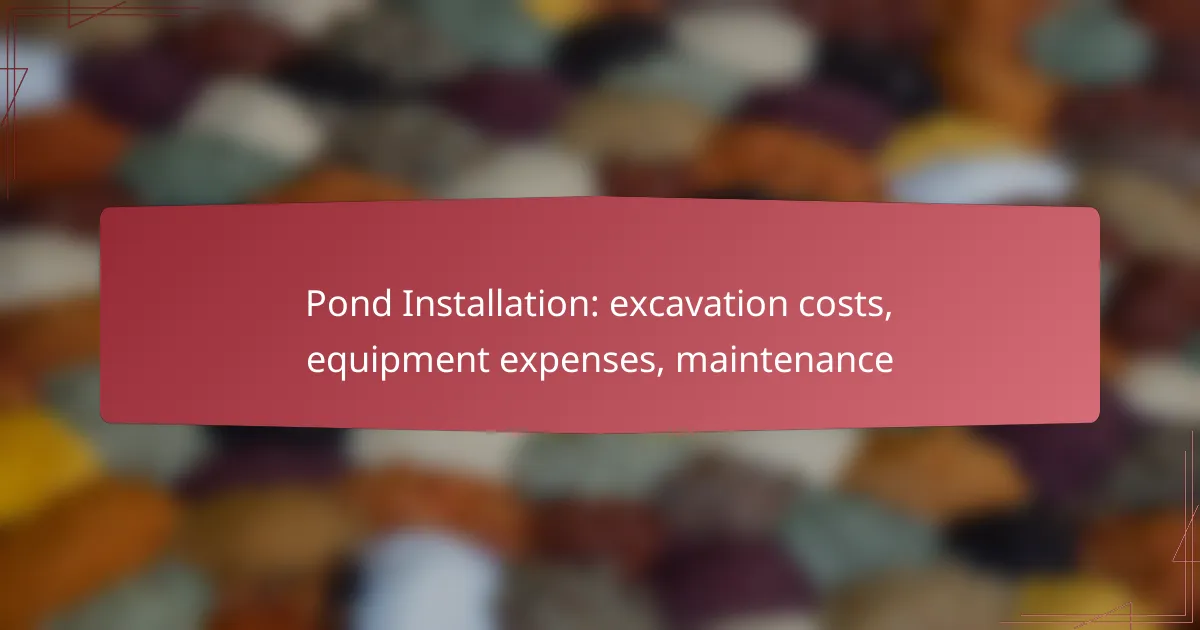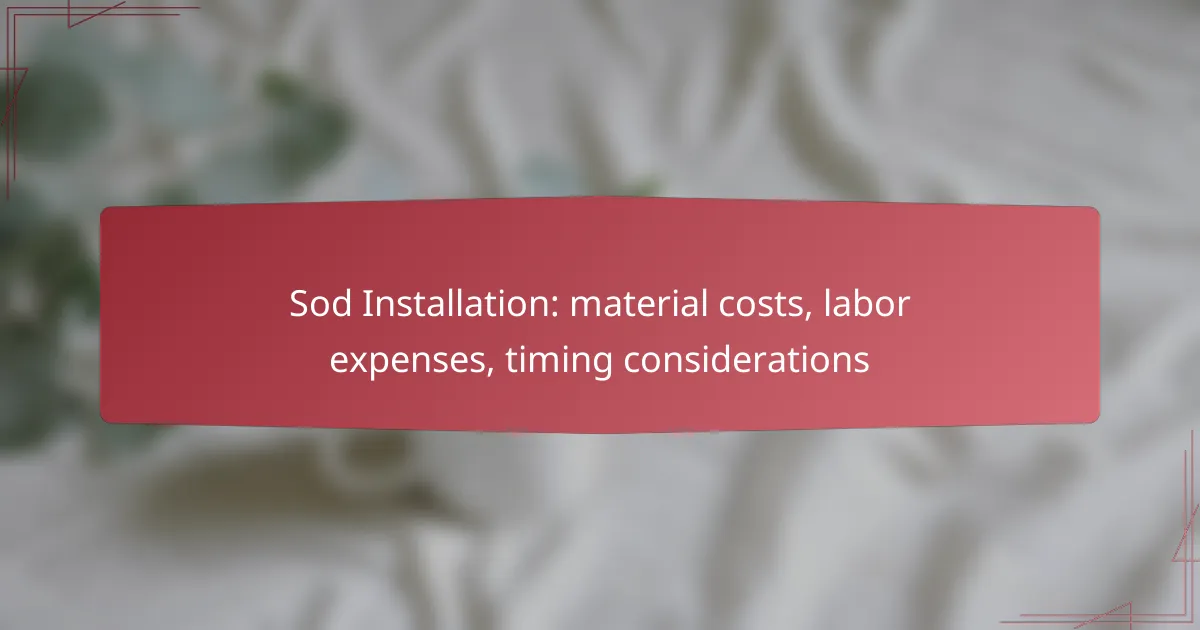Installing a pond involves careful consideration of excavation costs, which can vary significantly based on location and project specifics. Essential equipment, such as excavation tools and quality liners, plays a crucial role in ensuring a successful setup. Additionally, ongoing maintenance is vital to preserve water quality and plant health, particularly in regions with unique climatic challenges like Southern California.
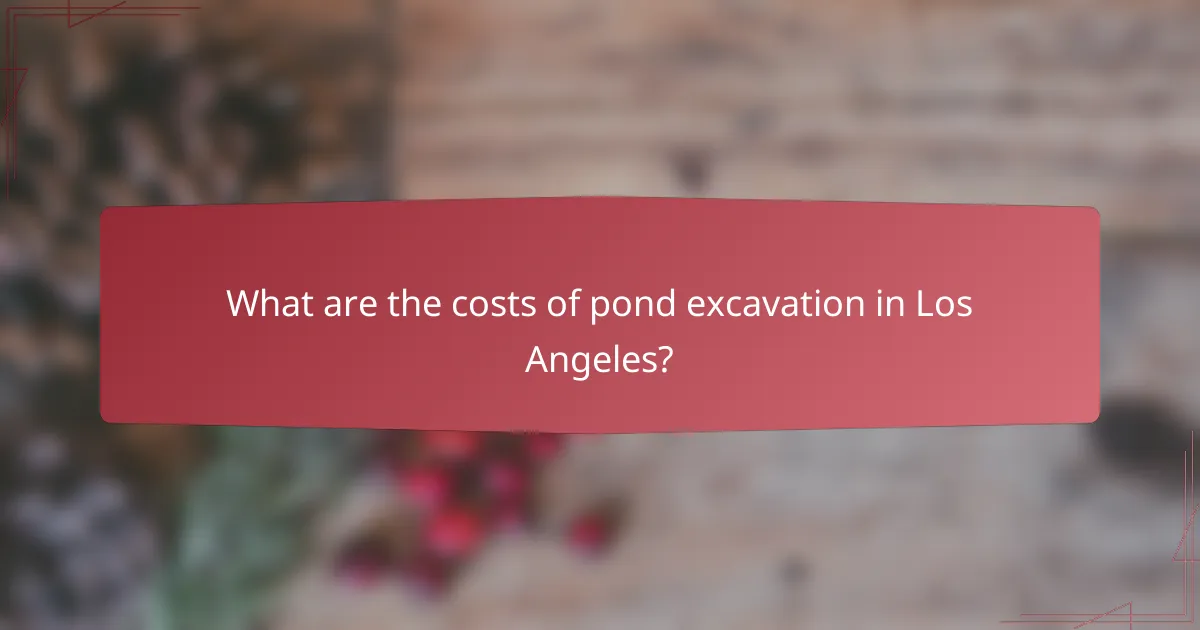
What are the costs of pond excavation in Los Angeles?
The costs of pond excavation in Los Angeles typically range from several dollars to over twenty dollars per square foot, depending on various factors. Understanding these costs is essential for budgeting your pond project effectively.
Average excavation costs per square foot
In Los Angeles, average excavation costs for pond installation generally fall between $5 and $15 per square foot. This range can vary based on the complexity of the site and the depth required for the pond.
For larger projects, economies of scale may reduce the cost per square foot. It’s advisable to obtain multiple quotes from local contractors to ensure competitive pricing.
Factors influencing excavation costs
Several factors can significantly impact the costs of pond excavation. Site accessibility, soil type, and the presence of underground utilities are critical considerations. For example, rocky or clay-heavy soil may require specialized equipment, increasing overall expenses.
Additionally, the size and depth of the pond will affect labor and equipment costs. Projects that require extensive grading or landscaping after excavation may incur further expenses. Always factor in potential permits and local regulations that could influence your budget.
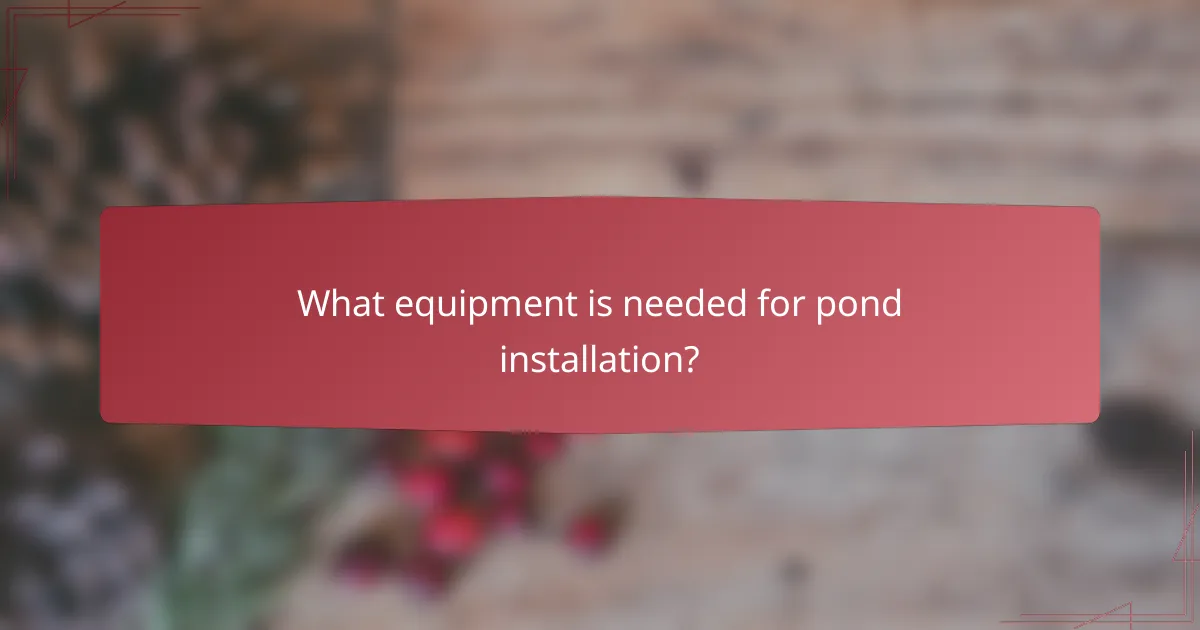
What equipment is needed for pond installation?
To install a pond, essential equipment includes excavation tools, liners, and pumps. Proper tools ensure efficient digging and setup, while quality materials contribute to the pond’s longevity and functionality.
Essential excavation equipment
Key excavation equipment for pond installation typically includes a backhoe or mini-excavator for digging, shovels for finer work, and a level for ensuring the pond’s depth is consistent. Depending on the pond size, a compact excavator may be more suitable for smaller areas.
Additionally, a dump truck can be useful for transporting soil and debris away from the site. Always check local rental services for availability and pricing, which can vary widely based on location and equipment size.
Recommended brands for pond installation tools
When selecting tools for pond installation, consider reputable brands known for durability and performance. Brands like Bobcat and Caterpillar are popular for excavation equipment, offering reliable machinery that can handle various soil types.
For hand tools, Fiskars and Ames provide quality shovels and rakes. Investing in well-reviewed tools can save time and reduce the risk of equipment failure during installation.
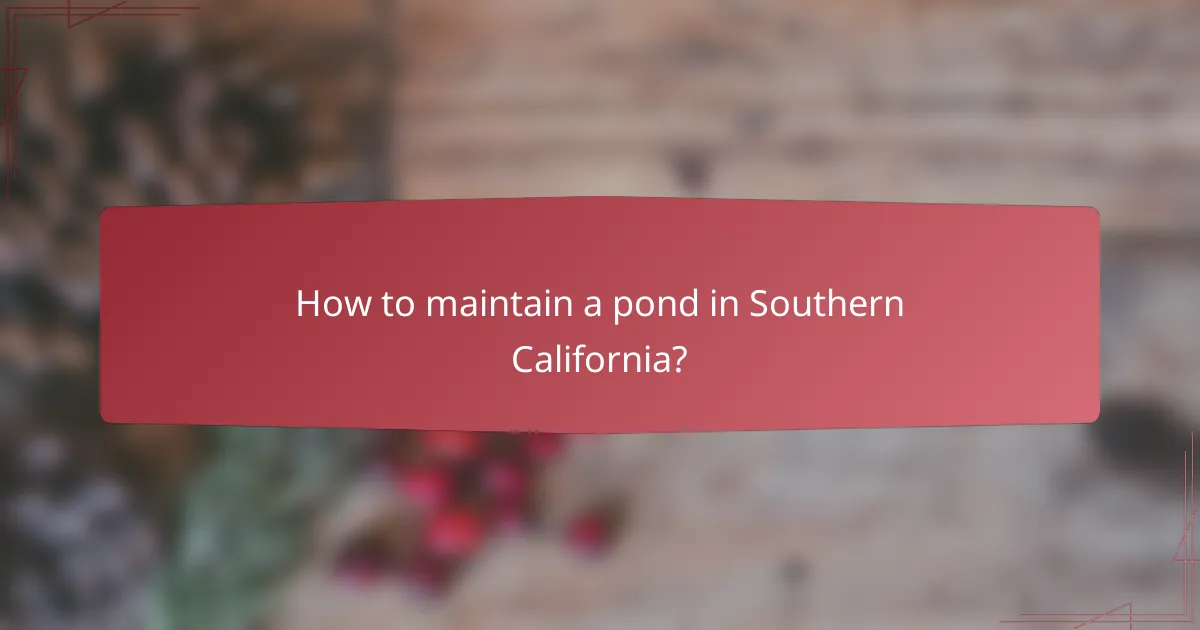
How to maintain a pond in Southern California?
Maintaining a pond in Southern California requires regular attention to water quality, plant health, and equipment upkeep. Due to the region’s unique climate, understanding local conditions is essential for effective pond management.
Regular maintenance tasks
Regular maintenance tasks for ponds include checking water levels, testing water quality, and cleaning filters. Aim to inspect your pond at least once a week to ensure that the water remains clear and balanced, which is crucial for fish and plant health.
Additionally, remove debris such as leaves and algae to prevent buildup, which can lead to water quality issues. Consider using a skimmer or net for efficient debris removal.
Seasonal maintenance considerations
Seasonal changes in Southern California can impact pond maintenance significantly. In the warmer months, monitor evaporation rates closely, as high temperatures can lead to rapid water loss. You may need to refill your pond more frequently during this time.
During the cooler months, focus on preparing your pond for winter. This includes trimming back aquatic plants and ensuring that any fish are safe from freezing temperatures. Regularly check equipment like pumps and heaters to ensure they are functioning properly before the cold sets in.

What permits are required for pond installation?
Installing a pond typically requires various permits to ensure compliance with local regulations and environmental standards. These permits may vary based on the pond’s size, location, and intended use.
Local regulations in Los Angeles
In Los Angeles, pond installation is subject to specific local regulations that aim to protect water quality and local ecosystems. Homeowners must check with the Los Angeles Department of Water and Power and the Los Angeles County Department of Public Works for guidelines on water features.
Common requirements include ensuring that the pond does not interfere with drainage systems and that it meets safety standards to prevent hazards. Additionally, if the pond is larger than a certain size, it may be classified as a “water body” requiring further scrutiny.
Application process for pond permits
The application process for pond permits in Los Angeles generally involves submitting detailed plans that outline the pond’s design, size, and intended use. Applicants may need to provide information on how the pond will be maintained and its impact on local wildlife.
Once the application is submitted, it typically undergoes a review process that may take several weeks. Homeowners should be prepared for potential site inspections and may need to address any concerns raised by the reviewing authorities before receiving final approval.
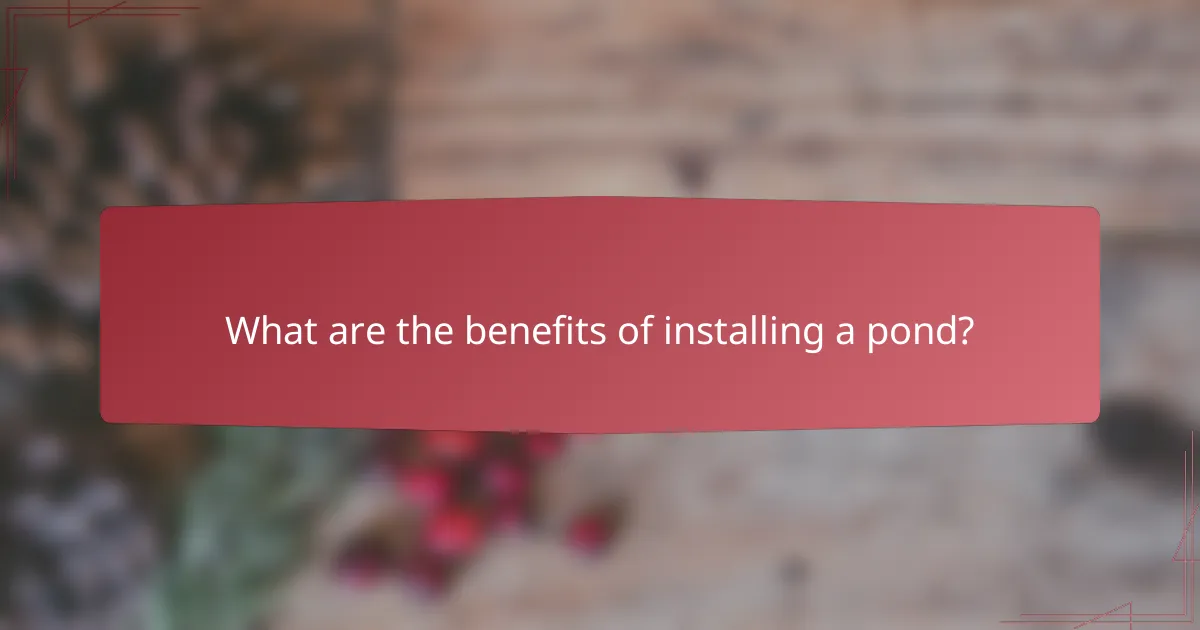
What are the benefits of installing a pond?
Installing a pond offers numerous benefits, including enhancing local biodiversity and providing a serene environment for relaxation and recreation. These advantages can significantly improve both the ecological health of an area and the quality of life for those nearby.
Environmental advantages
Ponds play a crucial role in supporting local ecosystems by providing habitats for various species of fish, amphibians, and insects. They can help maintain biodiversity and contribute to the overall health of the environment.
Moreover, ponds can aid in water management by absorbing excess rainwater, reducing runoff, and preventing erosion. This natural filtration process can improve water quality in surrounding areas, benefiting both wildlife and human populations.
Aesthetic and recreational benefits
A pond enhances the visual appeal of a property, creating a tranquil focal point that can transform outdoor spaces. The presence of water can attract birds and other wildlife, enriching the landscape and providing opportunities for nature observation.
Additionally, ponds offer recreational activities such as fishing, kayaking, or simply enjoying a peaceful moment by the water. These features can increase property value and create a desirable outdoor living space for families and guests.
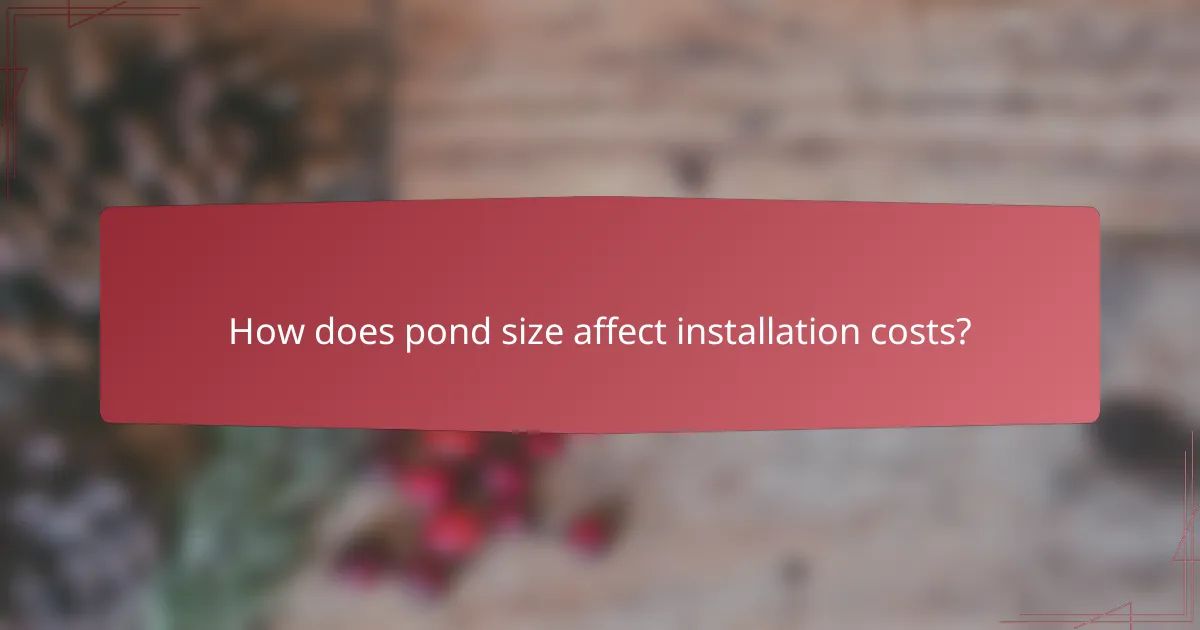
How does pond size affect installation costs?
Pond size significantly influences installation costs, as larger ponds require more excavation, materials, and labor. The overall expenses can vary widely based on dimensions, depth, and the complexity of the design.
Cost variations by pond size
The cost of installing a pond generally increases with size. For small ponds, expenses might range from a few hundred to a couple of thousand dollars, while medium-sized ponds can cost between two to five thousand dollars. Large ponds, especially those exceeding a certain area, may require investment in heavy machinery and specialized labor, leading to costs that can reach tens of thousands of dollars.
When planning for installation, consider not just the initial excavation costs but also the potential for additional features like waterfalls or filtration systems, which can further increase expenses. It’s wise to obtain multiple quotes from contractors to compare pricing based on the specific size and features you envision.
Impact of size on maintenance needs
Larger ponds typically demand more maintenance than smaller ones. This includes regular cleaning, water quality monitoring, and potential repairs to any installed features such as pumps or filters. The maintenance frequency can increase significantly with size, as larger bodies of water can accumulate debris and algae more rapidly.
For practical maintenance, consider establishing a routine based on the pond’s size. Small ponds may need attention every few weeks, while larger ponds might require weekly or even daily checks, especially during warmer months. Investing in automated systems for filtration and aeration can help manage these needs efficiently, but be prepared for higher operational costs associated with larger installations.
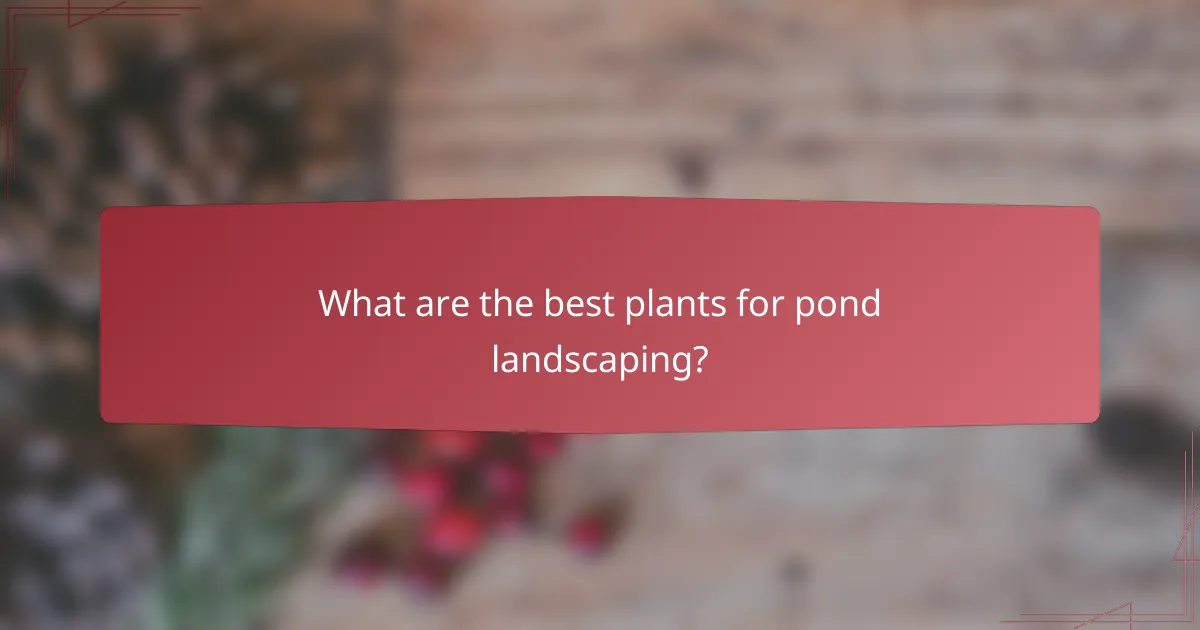
What are the best plants for pond landscaping?
The best plants for pond landscaping enhance the ecosystem, provide aesthetic appeal, and support local wildlife. Consider a mix of submerged, floating, and marginal plants to create a balanced environment.
Native plant options for California ponds
California ponds benefit from native plants that thrive in the local climate and soil conditions. These plants require less maintenance and are more resilient to pests and diseases.
Some excellent native options include the California bulrush, water lily, and cattail. These species not only beautify the pond but also provide habitat for local wildlife, such as birds and amphibians.
When selecting plants, consider their growth habits and how they will interact with each other. Grouping plants with similar water and light requirements can lead to a healthier pond ecosystem.
